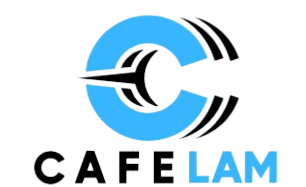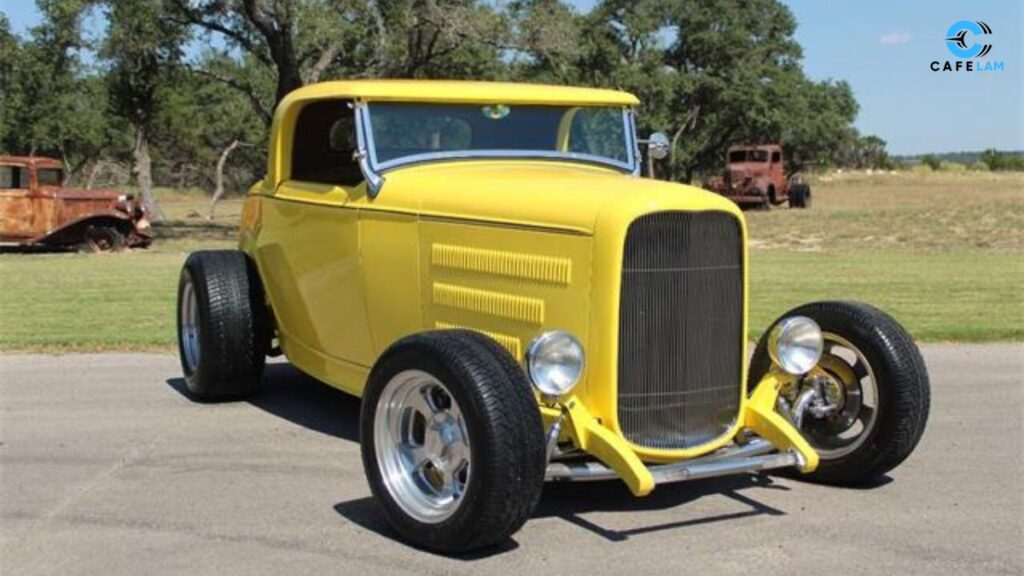Restoring a 1932 Chevrolet is like bringing a piece of automotive history back to life. These classic cars represent an era when craftsmanship mattered more than mass production. Finding the right parts can make or break your restoration project.
The 1932 Chevy marked a significant year for General Motors, introducing new styling and engineering improvements that set the stage for future designs. Whether you own a Confederate sedan, a roadster, or a coupe, tracking down authentic parts requires knowledge, patience, and the right connections.
This comprehensive guide will help you navigate the world of 1932 chevy parts, from understanding what you need to finding reputable suppliers who can deliver quality components for your restoration project.
Understanding Your 1932 Chevy Model
Before diving into parts hunting, you need to identify exactly what model you’re working with. Chevrolet produced several variations in 1932, each with specific part requirements and availability challenges.
The Confederate series was the main production line, available in various body styles including two-door and four-door sedans, coupes, and convertibles. Each configuration used different trim pieces, glass, and interior components that aren’t always interchangeable.
Model identification affects everything from engine specifications to body panels. Your VIN and body tag contain crucial information that parts suppliers need to ensure compatibility. Keep this information handy when contacting vendors or browsing catalogs.
Essential Engine Components and Availability
The heart of any 1932 Chevy restoration lies in the engine bay. These vehicles came with a 194-cubic-inch inline six-cylinder engine that delivered reliable performance for its era. Finding replacement parts for this powerplant requires understanding both original specifications and modern alternatives.
Critical Engine Parts to Consider:
- Pistons and rings (often require custom sizing)
- Cylinder head components and valves
- Carburetor rebuild kits and fuel system parts
- Ignition components including points and condensers
- Cooling system parts like radiators and water pumps
- Oil system components and gaskets
Many engine internals can be rebuilt or remanufactured to original specifications. Some components like pistons might need custom machining if you can’t find exact replacements. Working with experienced machine shops familiar with vintage Chevrolet engines often yields better results than trying to find new-old-stock parts.
Modern upgrades can improve reliability without compromising authenticity. Electronic ignition systems designed to look original offer better performance and easier maintenance than points-based systems.
Body and Exterior Parts Sources
Finding quality body panels and exterior trim represents one of the biggest challenges in 1932 Chevy restoration. These parts define your car’s visual appeal and often require the most investment in time and money.
Reproduction body panels have become increasingly available as interest in 1932 Chevys has grown. Companies like Classic Industries and Speedway Motors offer stamped steel panels that match original specifications. However, quality varies between manufacturers, so research before purchasing.
Original parts from salvage yards still offer the best authenticity, though condition can be questionable. Rust damage often makes original panels unsuitable without extensive metalwork. Budget for professional bodywork when planning your restoration timeline and costs.
Essential Body Parts Checklist:
| Component | Reproduction Available | Average Condition | Restoration Difficulty |
| Fenders | Yes | Poor to Fair | Moderate |
| Running Boards | Yes | Poor | Easy |
| Hood | Limited | Fair | Moderate |
| Trunk Lid | Limited | Fair | Moderate |
| Doors | Rare | Poor to Fair | Difficult |
| Grille | Yes | Good | Easy |
Chrome and stainless trim pieces require special attention during restoration. Many can be re-plated or polished to original appearance, but expect significant costs for quality work.
Interior Components and Upholstery
The interior of a 1932 Chevy tells the story of an era when comfort met craftsmanship. Original seats, door panels, and dashboard components showcase the attention to detail that made these cars special.
Seat frames often need rebuilding due to worn springs and damaged mechanisms. Original horsehair padding gives way to modern materials that provide better comfort and longevity. Professional upholsterers familiar with vintage techniques can recreate authentic appearances using period-appropriate materials.
Dashboard restoration presents unique challenges because many components integrate multiple functions. Instrument clusters, switches, and trim pieces work together to create the period aesthetic. Missing pieces often require fabrication or creative sourcing from other vehicles.
Window regulators and door hardware frequently need attention after decades of use. These mechanical components can usually be rebuilt with patience and the right parts. Reproduction window felts and weatherstripping help achieve proper fit and finish.
Electrical System Restoration
The 1932 Chevy’s 6-volt electrical system seems simple compared to modern vehicles, but restoration requires understanding period-correct wiring and components. Original harnesses often suffer from deteriorated insulation and corroded connections.
Complete reproduction wiring harnesses are available from several suppliers, offering modern materials in original configurations. These harnesses use correct colors and routing while providing better reliability than attempting to repair original wiring.
Generator rebuilding or conversion to modern alternators requires careful consideration. Original generators can be rebuilt to provide reliable charging, while alternator conversions offer better performance at the cost of authenticity. Hidden alternator installations satisfy both performance and appearance requirements.
Lighting upgrades improve safety without compromising appearance. LED bulb conversions fit original housings while providing better illumination and lower power consumption. Sealed beam headlight conversions offer similar benefits for night driving safety.
And before you go, be sure to read through some of our other helpful posts!
Specialized Tools and Hardware
Working on 1932 chevy parts often requires specialized tools and fasteners that differ from modern standards. Thread pitches, head styles, and materials reflect 1930s manufacturing practices that don’t always match contemporary hardware store inventory.
Period-correct fasteners maintain authenticity while ensuring proper fit and function. Suppliers like Restoration Specialties & Supply carry extensive inventories of vintage-style bolts, nuts, and screws. Plating services can restore original hardware to like-new appearance.
Special tools for removing and installing vintage components make restoration work easier and prevent damage. Steering wheel pullers, brake drum tools, and generator service equipment designed for older vehicles often prove essential for proper restoration work.
Finding Reputable Parts Suppliers
Building relationships with reliable parts suppliers makes restoration projects more enjoyable and successful. Long-established companies understand quality expectations and stand behind their products with knowledgeable customer service.
Online marketplaces offer convenience and competitive pricing but require careful evaluation of sellers and product descriptions. Photos don’t always reveal hidden damage or incorrect applications. Buying from sellers with strong feedback ratings and return policies protects your investment.
Specialty shops focusing on 1930s Chevrolets often provide the best expertise and part availability. These businesses understand the unique challenges of early Chevy restoration and stock parts that general suppliers might not carry.
Recommended Supplier Types:
- Established restoration supply companies
- Specialty 1930s Chevrolet shops
- Machining services for custom parts
- Reproduction parts manufacturers
- Classic car salvage yards
- Online auction sites with verified sellers
Budgeting Your Parts Investment
Restoration costs can quickly spiral out of control without careful planning and budgeting. Understanding typical part costs and availability helps establish realistic project timelines and financial commitments.
Engine rebuilds typically represent the largest single expense, often ranging from $3,000 to $8,000 depending on machine work requirements and parts availability. Body and paint work frequently exceeds engine costs when extensive metalwork becomes necessary.
Setting priorities based on safety, function, and appearance helps manage spending while maintaining progress. Brake systems and steering components deserve immediate attention, while cosmetic items can wait for budget availability.
Creating a detailed parts list with estimated costs prevents surprises and helps negotiate better pricing with suppliers. Many vendors offer package deals or discounts for larger orders that can reduce overall project costs.
Quality Control and Authentication
Not all reproduction parts meet original quality standards, making careful inspection essential before installation. Fit, finish, and materials can vary significantly between manufacturers and even production runs from the same company.
Test-fitting parts before painting or modification prevents costly mistakes and ensures proper assembly. Taking measurements and comparing to original specifications helps identify potential problems before they become expensive fixes.
Documentation of part numbers, suppliers, and installation procedures creates valuable records for future maintenance and potential resale. Photography during disassembly provides reference materials that prove invaluable during reassembly.
Conclusion
Restoring a 1932 Chevy requires patience, planning, and the right parts sources. Success comes from understanding your specific model, building relationships with knowledgeable suppliers, and maintaining realistic expectations about time and costs.
Start with safety-critical components like brakes and steering before moving to cosmetic improvements. This approach keeps your project roadworthy while building restoration skills and budget for more challenging components.
Remember that every restored 1932 Chevy represents automotive history preserved for future generations. Taking time to do the job right ensures your classic will provide enjoyment for years to come.
Curious to learn more? Dive into the rest of our blog for helpful tips and insights!
Frequently Asked Questions
Q: Are reproduction 1932 Chevy parts as good as original components?
A: Quality varies by manufacturer, but many reproduction parts now meet or exceed original specifications using modern materials and manufacturing techniques.
Q: How long does it typically take to complete a 1932 Chevy restoration?
A: Most complete restorations take 2-5 years depending on scope, budget, and available time, with many enthusiasts working evenings and weekends.
Q: Can modern safety upgrades be added without affecting authenticity?
A: Yes, many safety improvements like dual-circuit brake systems and LED lighting can be installed discretely while maintaining original appearance.
Q: What’s the most difficult part to find for a 1932 Chevy?
A: Unique body panels like door skins and complex assemblies such as complete instrument clusters often present the greatest sourcing challenges.
Q: Should I restore the original engine or consider a modern replacement?
A: Original engines can be rebuilt reliably, but modern alternatives offer better performance and easier maintenance while potentially affecting collector value.







